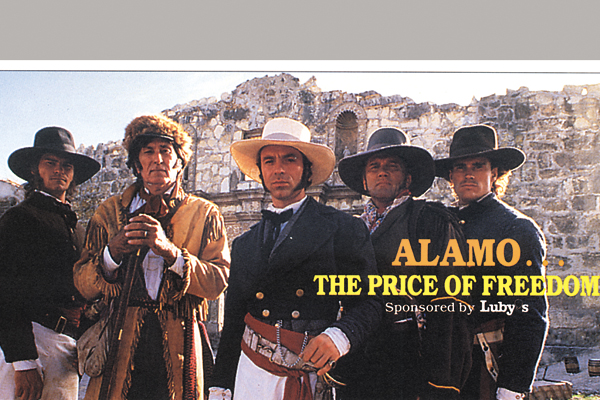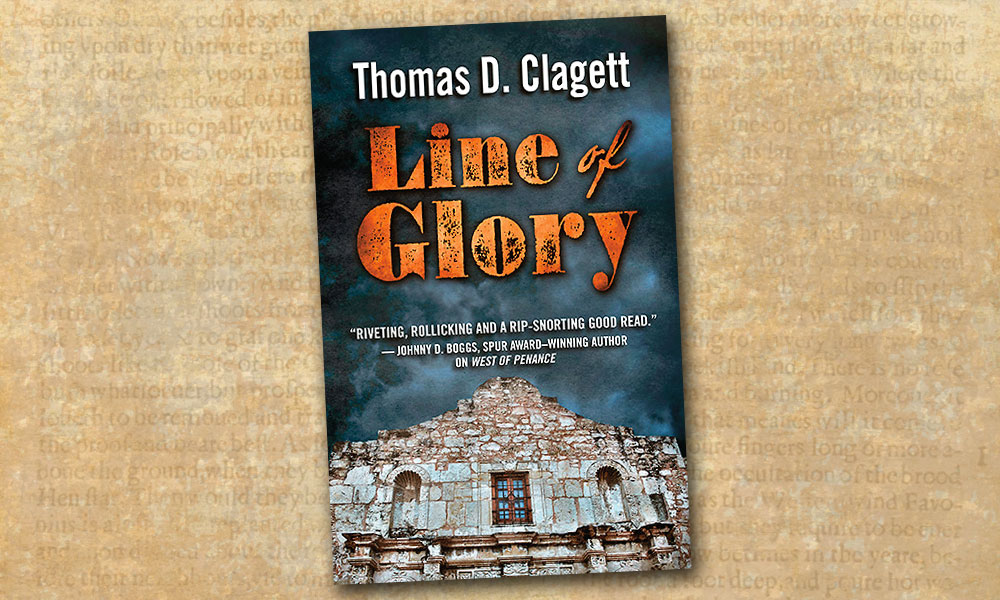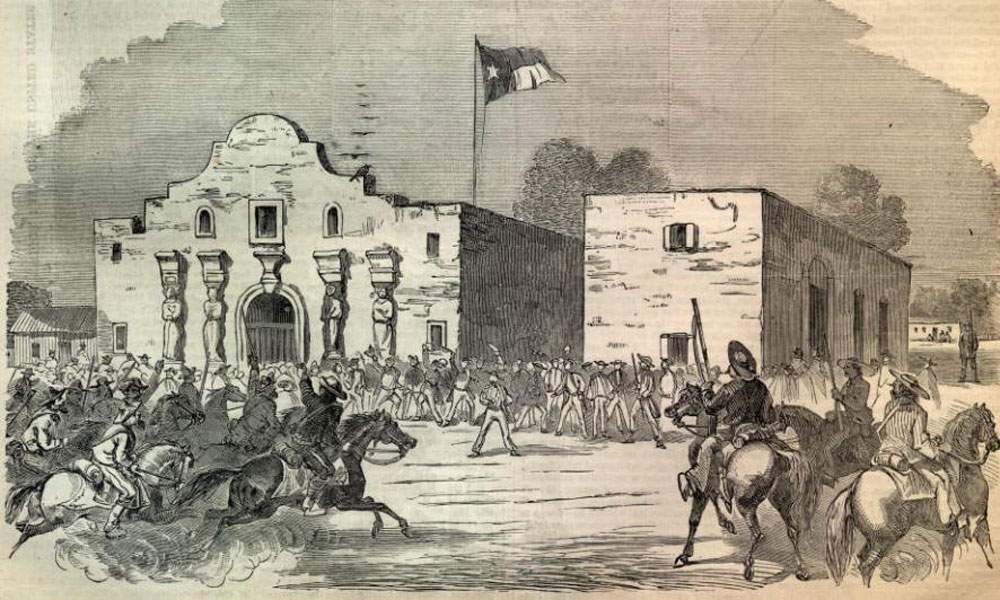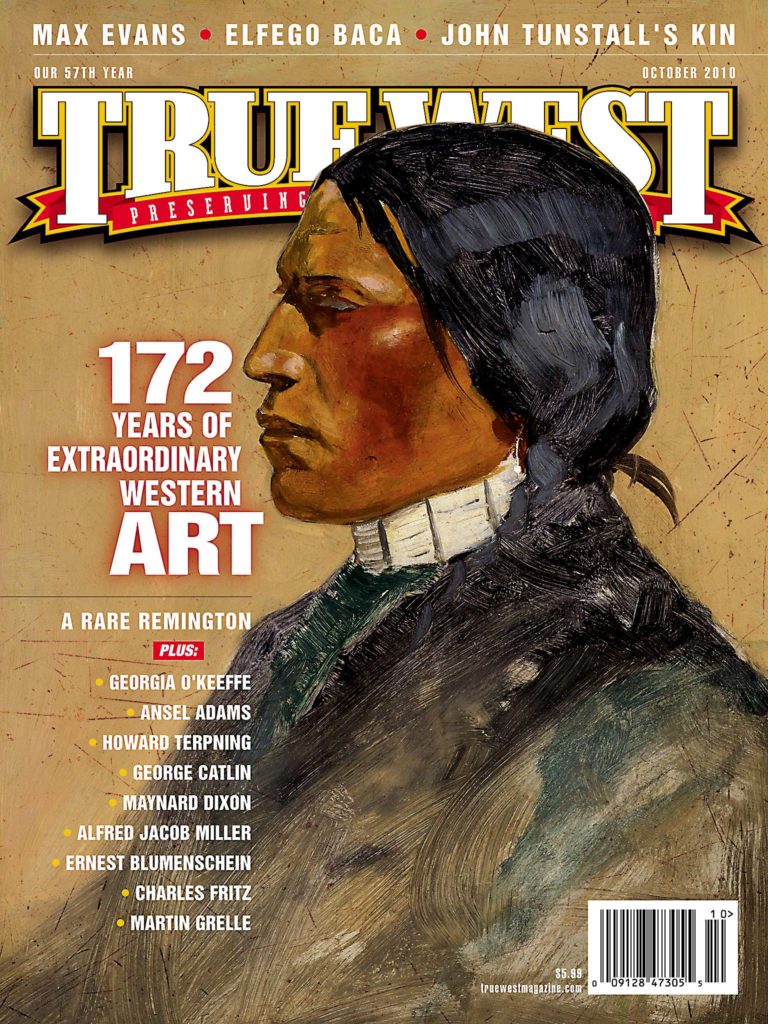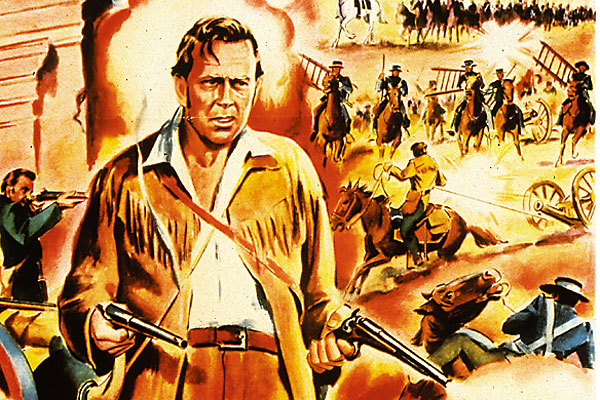
Everybody has been talking about Alamo movies this year, but they keep forgetting the best of the bunch.
Actor Fess Parker’s death led every Baby Boomer who got a coonskin cap to recall the legendary 1955 Walt Disney production about Davy Crockett. I always thought Fess was underrated as an actor (remember him in 1954’s Them!), and he sure knew how to make good wine.
Of course, this year marking the 50th anniversary of the release of The Alamo brought up many retrospectives about John Wayne’s train wreck of a film.
That movie was in the news for other reasons too.
In Brackettville, Texas, Alamo Village—the movie set that became a tourist stop—was closed to the public after the deaths last year of “Happy” Shahan’s widow and daughter. Shahan had lured Wayne to his ranch to film the movie there, and he kept the set open for movie companies and tourists. (The set was reopened to tourists this past summer for three days a week.)
Then Robert A. Harris got press for his efforts to save the “Roadshow” version of The Alamo that debuted in San Antonio in October 1960. Wayne later cut 31 minutes out of the 192-minute movie, and DVDs today are of the edited version in a 35mm reduction of the original. The 70mm “Roadshow” version was presumed lost until 1991, when Harris receive a phone call from a stranger who had discovered a print in Toronto. Somehow that one never made its way to cold storage; Harris found it a decade later in Los Angeles “rotting,” he says, “with no color left.” Harris, who has restored classics such as Lawrence of Arabia, My Fair Lady, Rear Window and Spartacus, says it will take about $1.6 million to restore what he can of the “Roadshow” Alamo. Why bother with The Alamo? “I just love movies,” Harris tells me, “and I like saving them. It’s as simple as that.”
In all this talk about The Alamo, what gets overlooked is the best movie about the battle. That’s The Last Command, the 1955 film from B-programmer Republic Pictures starring Sterling Hayden as Jim Bowie, Arthur Hunnicutt as Davy Crockett and Richard Carlson as William B. Travis. Few recall the movie. It’s not even available on DVD.
So I called Ben Cooper, who played Jeb Lacey in The Last Command. You remember Jeb Lacey. “They always made the guy who leaves the Alamo the nice-looking kid,” Ben says.
“The Last Command’s a better picture than The Alamo,” I tell Ben.
Says Ben: “I think so, and I think John Wayne did too. Bill Witney directed the second unit [for The Last Command], a fabulous action director, and John Wayne…told Billy Witney—they’d known each other for many years—‘Billy, I think you got a lot better action in yours than I did in mine.’ And I think he’s right.”
Both movies were filmed in Brackettville. “Quiet and dusty,” Ben recalls. Hmmm. The place hasn’t changed much in 50-plus years.
So why don’t we remember The Last Command?
“It was made by Republic,” Ben says, “and people thought that’s like being made by [low budget] Monogram [Pictures]. But we who worked on it put everything we had into it.”
“The Last Command departs from the pattern of the elementary action film to the extent of showing motivations that are not simply black and white,” The Christian Science Monitor noted in 1955, while The New York Times called Wayne’s Alamo “another beleaguered blockhouse Western.”
Yep, The Last Command wins hands down—even if nobody remembers it.
Says Ben Cooper: “I thought it was one hell of a good picture.”
Maybe Harris should consider restoring that film!


